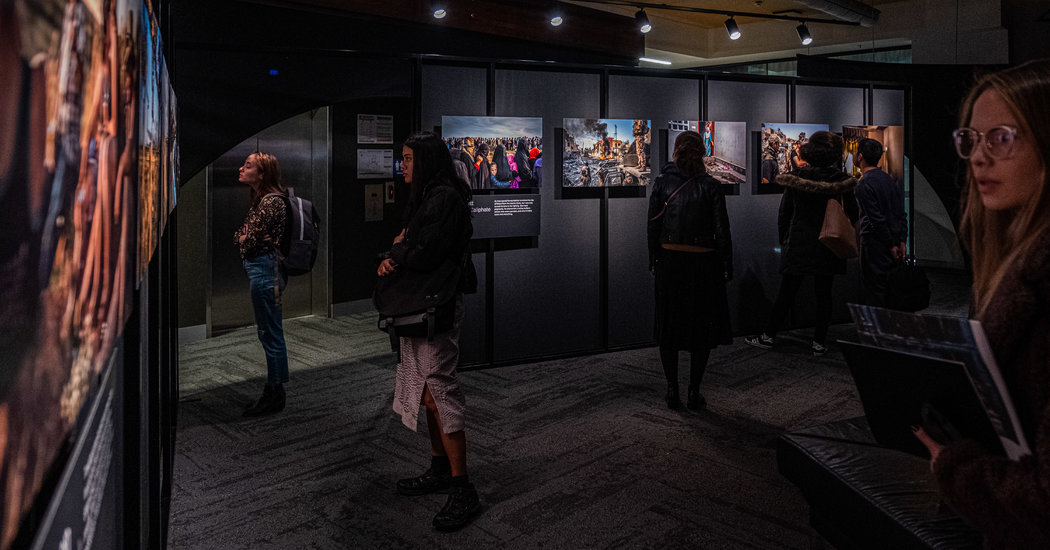The Australia Letter is a weekly e-newsletter from our Australia bureau. Indication up to get it by electronic mail. This week’s situation is published by Damien Cave, the Australia bureau main.
__________
The pictures appear from all about — Manila, Mosul and Caracas, remote Australia and rural Cuba. They seize people today demanding dignity in each individual circumstance, and, getting first appeared in The New York Moments, their intent is to make you quit, look and believe.
Now, for the to start with time in Australia, you can see them not on your mobile phone or pc, but in an show, referred to as “Hard Truths.”
Hosted at the University of Melbourne through Oct. 11, it’s an energy to display our colleagues’ award-profitable work in a clean new way, in man or woman and in significant format. The encounter is meant to be provocative — to increase concerns about how the media signifies the entire world and how the planet responds to its ills, from war to poverty and climate improve.
Final evening, we held two functions in support of the undertaking. 1st there was a Q&A with Adam Ferguson, an Australian photographer who shoots all around the world for The Times. A panel discussion on world migration adopted, with Julian Burnside, the human rights lawyer Professor Karen Farquharson, who researches the sociology of race and identity, and Professor Michelle Foster, the inaugural director of the Peter McMullin Center on Statelessness at Melbourne Legislation School.
I was aspect of each discussions (at the hazard of talking too significantly), and what I located striking and encouraging was the audience’s intensive fascination in how journalism can be done responsibly.
At the Q&A, college students requested what we do to make confident individuals we address experience as while they have a voice in the approach. At the panel, we mentioned how the media could enhance its protection of migration. I was also asked what journalists should really do when they see other journalists failing to live up to standard ethical requirements.
These are challenging questions. I actually really don’t have an response to the very last 1. As I advised the group, I have frequently observed other journalists becoming impolite or sensationalizing a big news celebration — like an earthquake or a mass capturing — and I have hardly ever acknowledged pretty what to say.
With the other inquiries, although, I see clearer paths to additional responsible journalism.
One particular detail I typically do to make confident persons I create about really do not really feel burned and exploited is promise to arrive back again to them just before publication and examine them the areas of my tale that relate to them. I do this to make absolutely sure my characterizations are exact, and to retain persons from becoming surprised.
Particularly for those who have shared sensitive private encounters and haven’t dealt with the media significantly, I attempt to reveal the place they healthy into the story — to make confident they have an understanding of the procedure. From time to time persons argue for modifications, from time to time they talk to why I wrote what I did, but in almost every situation, the dialogue finishes positively and the man or woman feels far more bundled.
As for migration, I think there are some basic very best techniques that journalists can follow when crafting about it. For instance, I really don’t use phrases like “wave” or “invasion” when describing migrant inflows, specifically not when it’s associated to asylum seekers. That sort of language has been utilized for many years to stoke xenophobia, and it’s loaded — it implies that migrants are normally a threat.
Also, it’s crucial to count on info to encourage realistic (fairly than psychological) discussion. At one particular issue on our evening panel, for instance, Professor Foster requested the group to guess what share of all migrants coming to Australia arrive on humanitarian visas. 1 member of the viewers guessed 40 percent.
The true range? Two p.c, if all momentary visas are involved 10 per cent if you search only at everlasting migrants who have arrived since 2000. In general, it is considerably fewer than most people believe.
“Hard Truths,” the photo exhibit, features stark photographs from countries wherever many refugees come from — Iraq, Cuba and Venezuela among them. And it’s value inquiring no matter whether the media’s consideration to these sites contributes to the notion that asylum seekers are significantly way too quite a few for rich, profitable international locations like Australia and the United States to tackle.
But by the similar token, what would the earth be like without having these illustrations or photos that goal to support us recognize? Possibly it is not the photos that are the challenge so a lot as the way they are interpreted and utilised for politics. How we manage them is up to us. They existing us with an prospect — if only we’ll interact.
As Julian Burnside claimed at the stop of our panel very last night time, citing the name of a documentary film about Germany and its heritage of loathe: “Never seem away. In no way appear away.”
